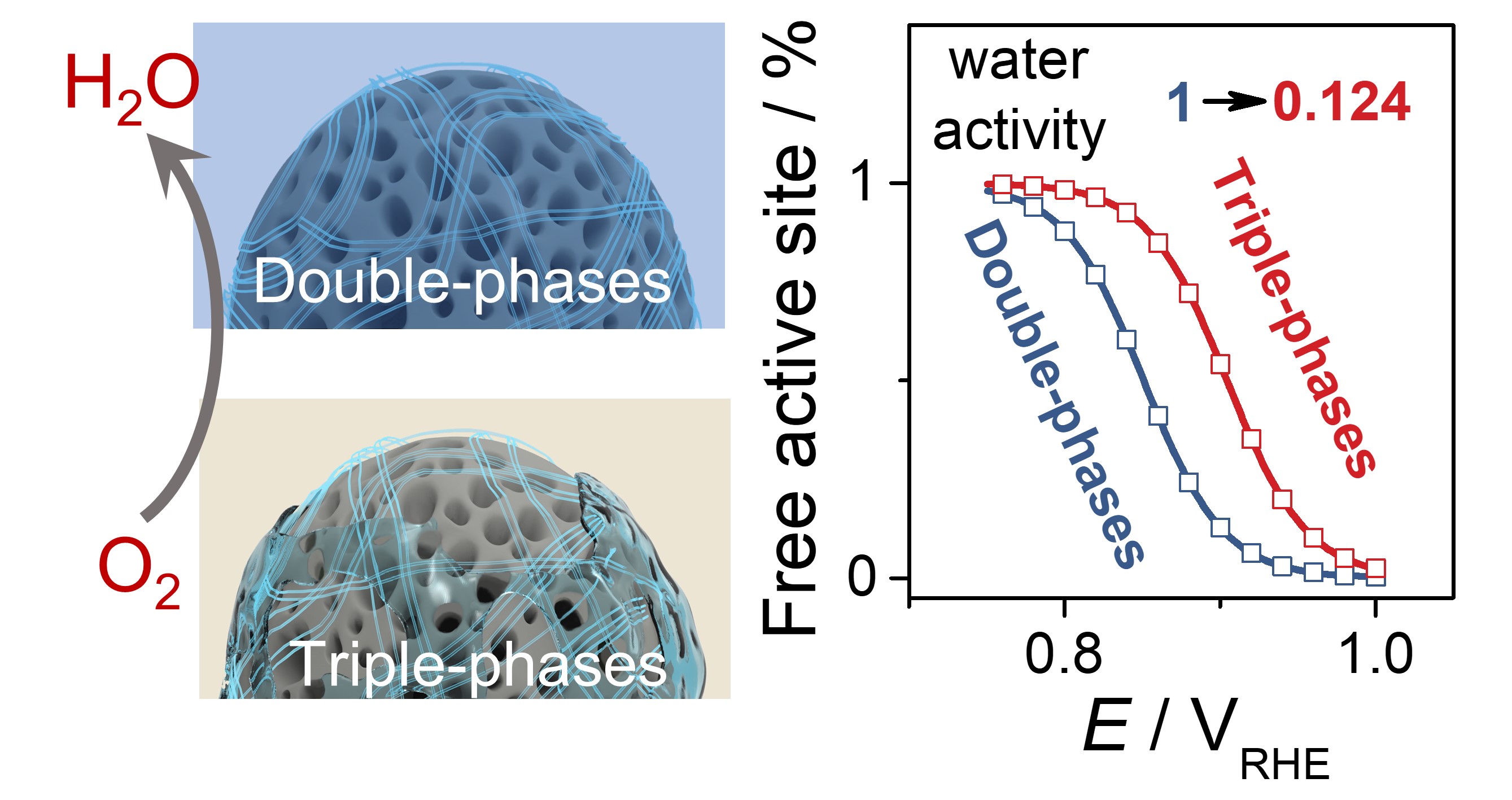Microenvironment Alters the Oxygen Reduction Activity of Metal/N/C Catalysts at the Triple-Phase Boundary
Release time:2022-07-14 Hits:

Journal:ACS catalysis
Key Words:oxygen reduction reaction, Fe/N/C catalysts, triple-phase boundary, microkinetic model, electrocatalysis
Abstract:Metal- and nitrogen-doped carbon (M/N/C) catalysts are promising catalysts that may replace platinum in the oxygen reduction reaction (ORR) in proton-exchange membrane fuel cells (PEMFCs). At the triple-phase boundary, the complex electrochemical interface of M/N/C catalysts involves the water film between highly dispersed active sites and aggregated ionomers, and the electrochemical behavior is different from that at the double-phase boundary, where a rotating disk electrode (RDE) is directly submerged in the aqueous solution. In this work, the ORR kinetics of the same Fe/N/C catalyst at the double-phase boundary at the RDE and the triple-phase boundary at the gas diffusion electrode (GDE) were compared to determine the microenvironmental factors that can tune the ORR activity. A model was created based on the reaction mechanism, microkinetic analysis, and local proton transport in the pores. The model fitting identified the accessible active sites and the water activity as the factors influencing the different ORR kinetics of the RDE and GDE. The surface charge and functional groups were proposed to tune the proton transport in the pores, resulting in a loss of accessible active sites when E > EQ/HQ at the GDE. Low water activity in the GDE was predicted by the model fitting. This low activity triggered low OH* coverage and facilitated the reaction kinetics, but it limited the proton transport at the GDE. Strategies for improving proton transport are suggested for the future design of catalysts and ionomers. This study quantitatively demonstrates how the microenvironment alters the ORR kinetics of Fe/N/C catalysts.
Indexed by:Journal paper
Volume:12
Issue:14
Page Number:9003-9010
Translation or Not:no
Date of Publication:2022-07-14
Included Journals:SCI
